Strategic orientation
To understand how the two year-olds oriented themselves within preschool spaces we identified genre where they engaged in meaning-making dialogues.
How do two year-olds strategically orient themselves in 'preschool'?
Genre are the drive-belts to meaning
Bakhtin, 1986, p.65
Genre are made up of combinations of language forms that characterise their unique meanings in specific contexts. We highlight five genre that provided opportunities for two year-olds to engage in meaningful dialogues:
- Care routine
- Transitions
- Imaginative Play
- Construction Play
- Sandpit Play
More reading material on genre
- Po Chi Tam's 2012 article
- Lynn Cohen's 2015 article
- Jayne's book, Introducing dialogic pedagogy
Care routines
Care routine dialogues took place at regular intervals across the day for the two year-olds.
In this genre, language were primarily made up of the following strategic combinations:
- From teachers: Question or narrate
- From peers: Demonstrate + instruct, suggest or offer
- From two-year-olds: Watch
These genre often involved the peer group in a demonstrating role.
For further reading see the book by Joseph Tobin and colleagues: Preschool in three cultures revisited: China, Japan and the United States
Listen to how teachers altered their practice when they realised this

Transitions
Transition genre played a vital role for these two year-olds to orient themselves through movement between spaces. They did this in two central ways as follows:
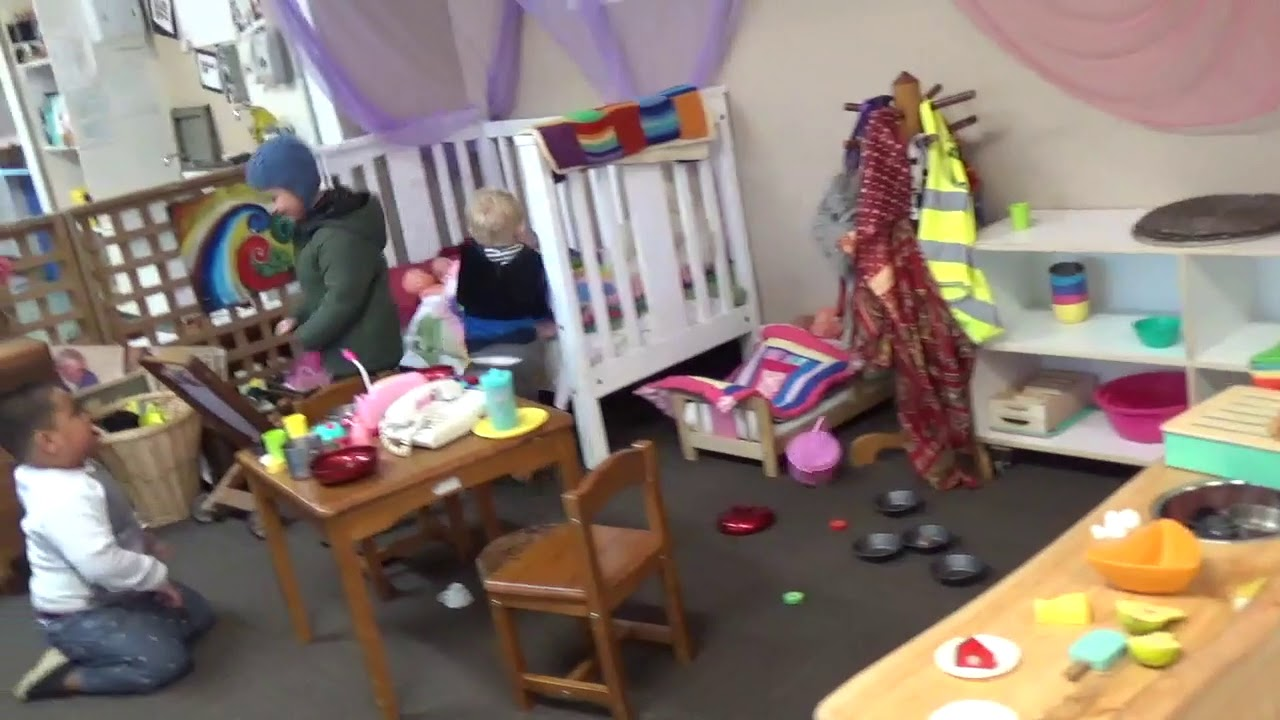
- As they used their bodies and sounds to move around the environment, often running, jumping, or dancing gleefully. Typically, they did this with peers (as you will discover when you watch the first video below) and were inspired to utilise large spaces or 'circuit' spaces.
In the transition genre, language were primarily made up of the following strategic combinations:
- From teachers: Question or narrate
- From peers: Demonstrate + instruct, suggest or offer
- From two-year-olds: Watch within a genre or watch on genre periphery
- As two year-olds moved to group experiences, the teacher (or peers) played a role in supporting them to recognise a shift in genre.
In the split-screen video (taken from the visual field of Catherine's glasses and the roving camera) that follows, watch Harry move from outdoors to mat time. Watch how he learns how to 'be' in this genre and notice the different strategies used by teachers which they came to describe as a "dialogic dance".
Transition to mat time
Listen to Catherine explain about this genre and its opportunity for learning
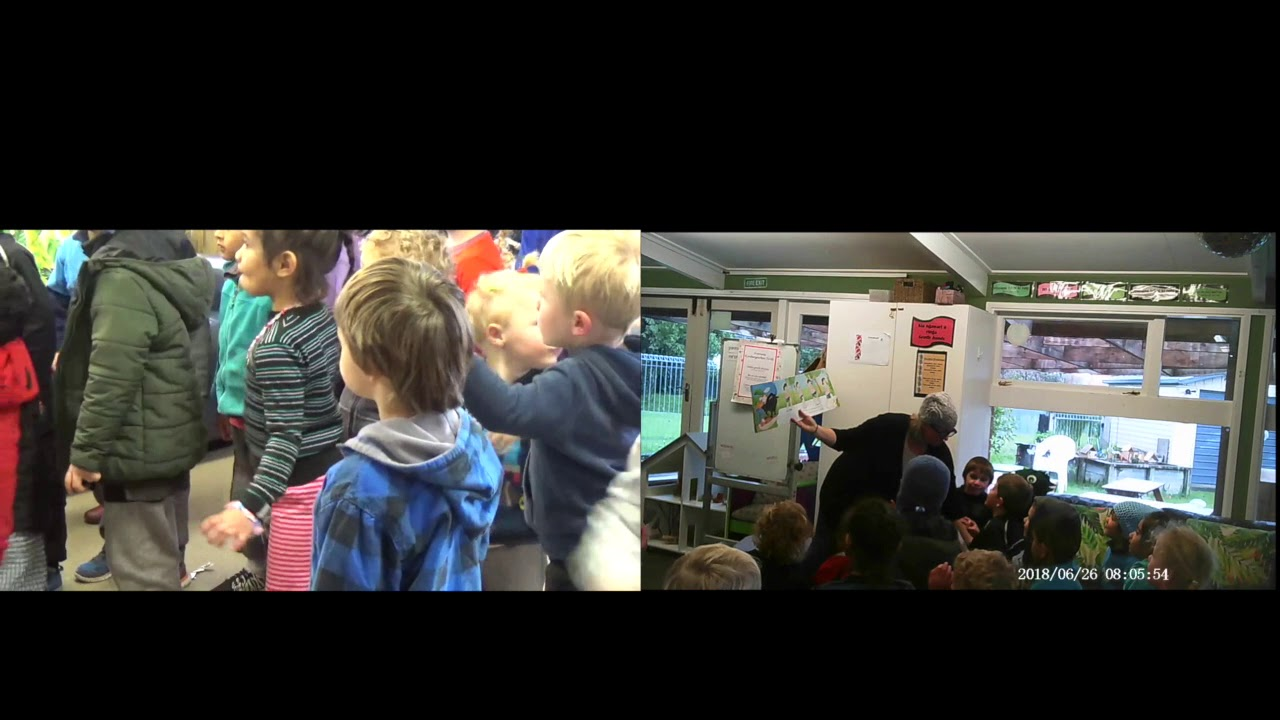
Imaginative play
Teachers seldom featured in two year-old imaginative play genre. It was characterised by the use of objects in imaginative ways or participation in peer games. The two year-olds were very focussed in these spaces.
In this genre, language combinations were primarily made up of the following strategic combinations:
- From teachers: Question or narrate
- From peers: Demonstrate + instruct, suggest or offer + subvert
- From two-year-olds: Watch
Peers played a large role in play. Two year-olds watched carefully and then participated wholeheartedly. Watch Cameron with two older siblings in the family corner as you listen to Shavaurn's reflection on her role in this genre.
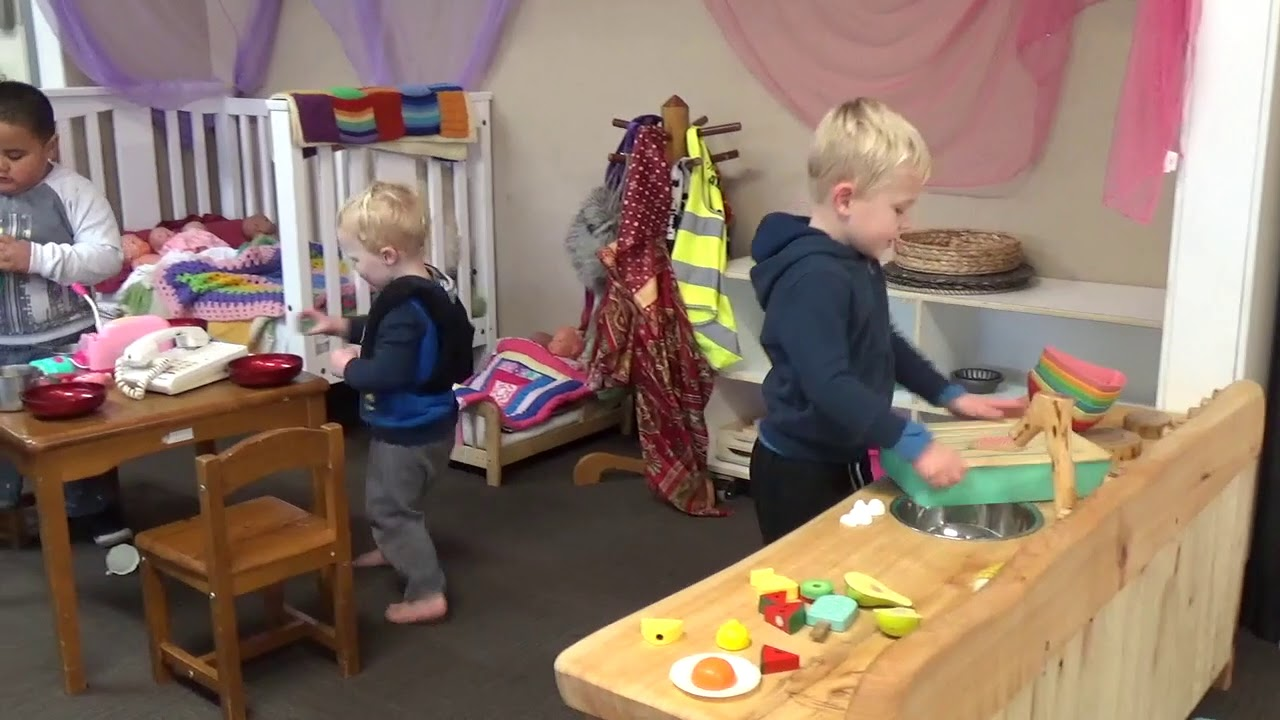
Two year-olds definitely do have their own ways of being in our environments, and in recognising this, we give them and ourselves permission to celebrate their learning based on their priorities, not ours
Teacher
Regardless of whether teachers were present or not, a dialogic lens enabled them to see that they are implicated nonetheless.
For further reading, refer to the following articles:
- When the footlights are off: A Bakhtinian interrogation of play as Postupok
- Playing with children, answering with our lives: A Bakhtinian approach to co-authoring ethical identities in early childhood.
- Implicating teachers in infant-peer relationships: Teacher answerability through alteric acts.
Construction Play
In a construction play genre we saw a great deal more adult involvement and verbal language than for other genre.

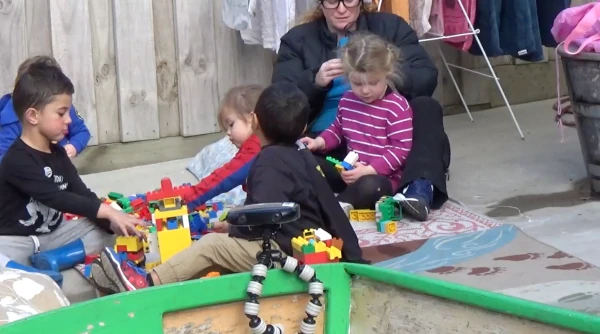
Language in this genre were primarily made up of the following strategic combinations:
- From teachers: Question or narrate + Demonstrate
- From peers: Demonstrate
- From two-year-olds: Watch
There were often established ways of working which had to be navigated by the two year-olds with adult assistance.
Teachers made two key pedagogical shifts as a result of their discoveries.
- Teachers offered increased encouragement to the peer group in their demonstrating role, trusting that peers were capable pedagogical partners.
- Teachers recognised their own role in working creatively and supportively with two year-olds as they negotiated the materials they worked with, sometimes not in ways that teachers expected!
For further reading see Lynn Cohen's paper on block play.
Watch how Shavaurn does this
Listen as she discusses her revised understanding.
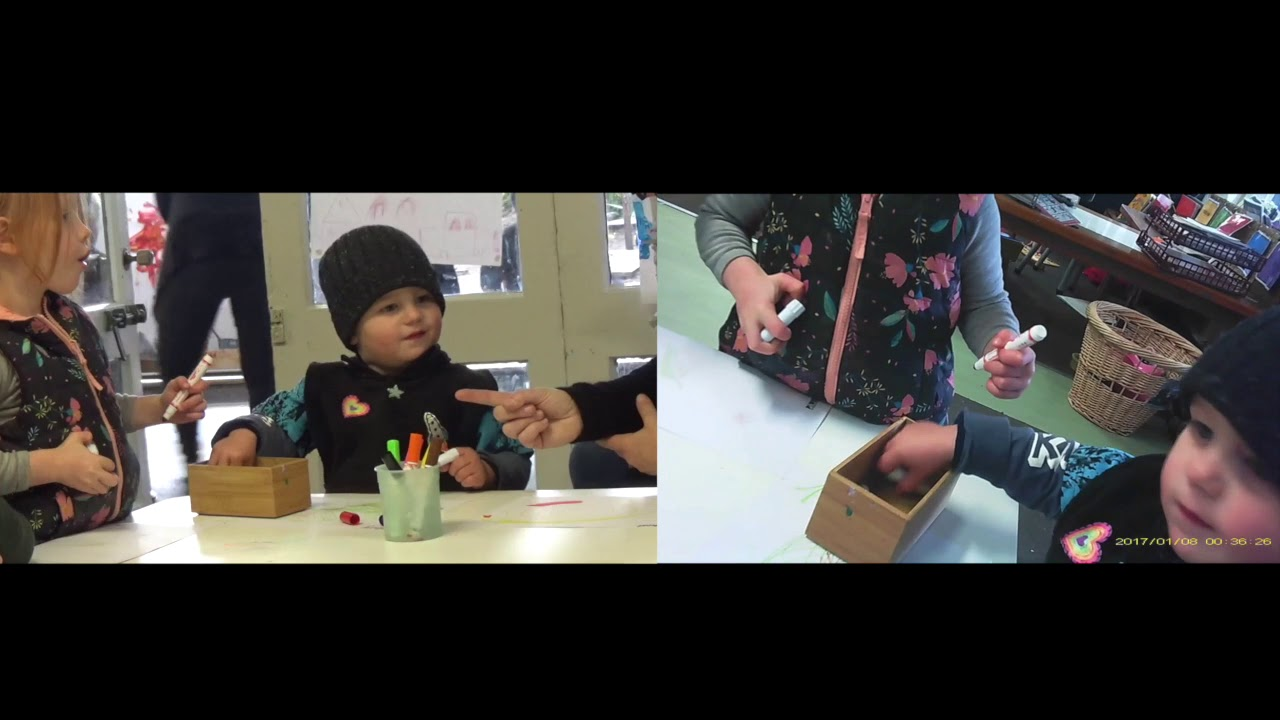
Sandpit Play
The sandpit provided a unique genre for the two year-old dialogues that enabled them to participate in groups with teachers and children to build up and breakdown sand while enjoying a sensory experience - especially when water was added!

In this genre, language were primarily made up of the following strategic combinations:
- From teachers: Demonstrate + instruct, suggest, or offer + questioning or narrating
- From peers: Demonstrate + subvert
- From two-year-olds: Watch within genre or watch on genre periphery
Watch two year-old Legend and his peers at Avenues Kindergarten
Using polyphonic video taken from the tracking camera (left), teachers glasses (right) and 360 degree camera (below) watch two year-old Legend and his peers at Avenues Kindergarten last summer.
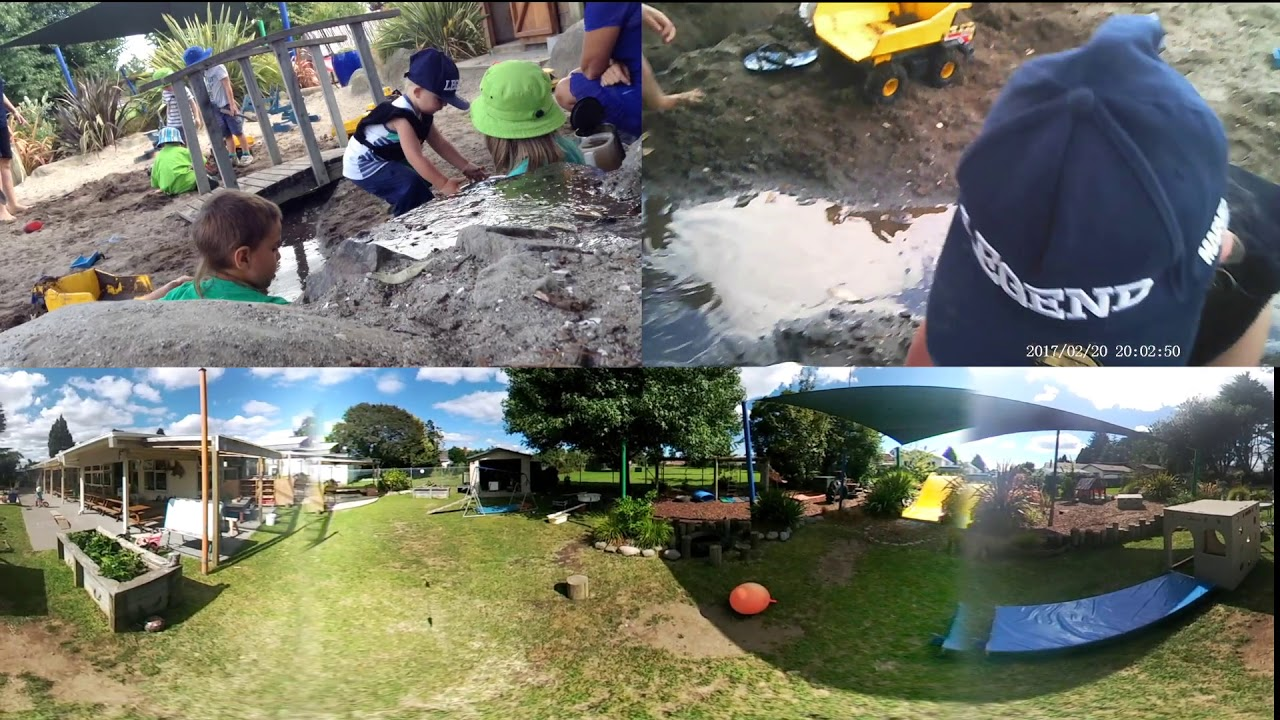
While you listen to Shavaurn share her discoveries by pressing the following sandpit button and by following this link to the section on what peers say and do with two year-olds.